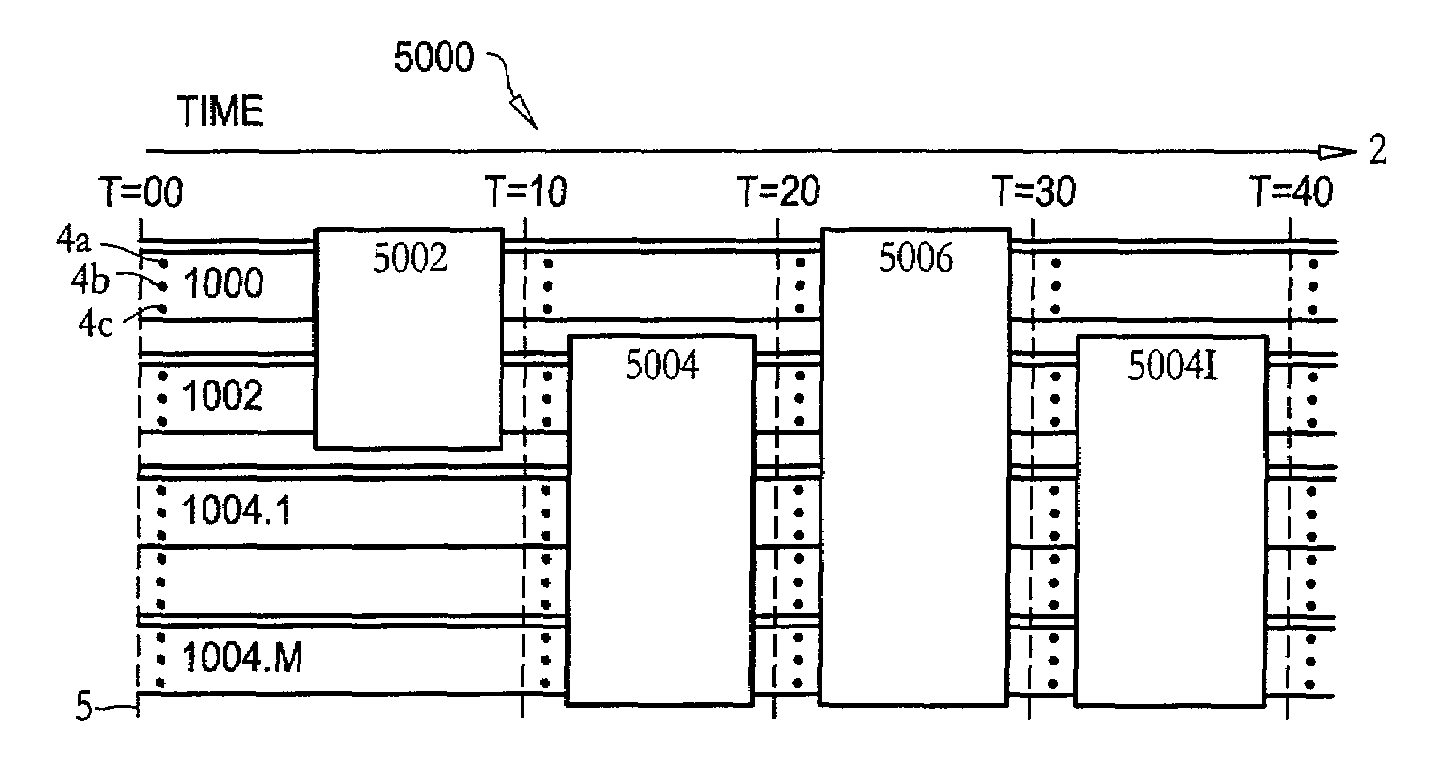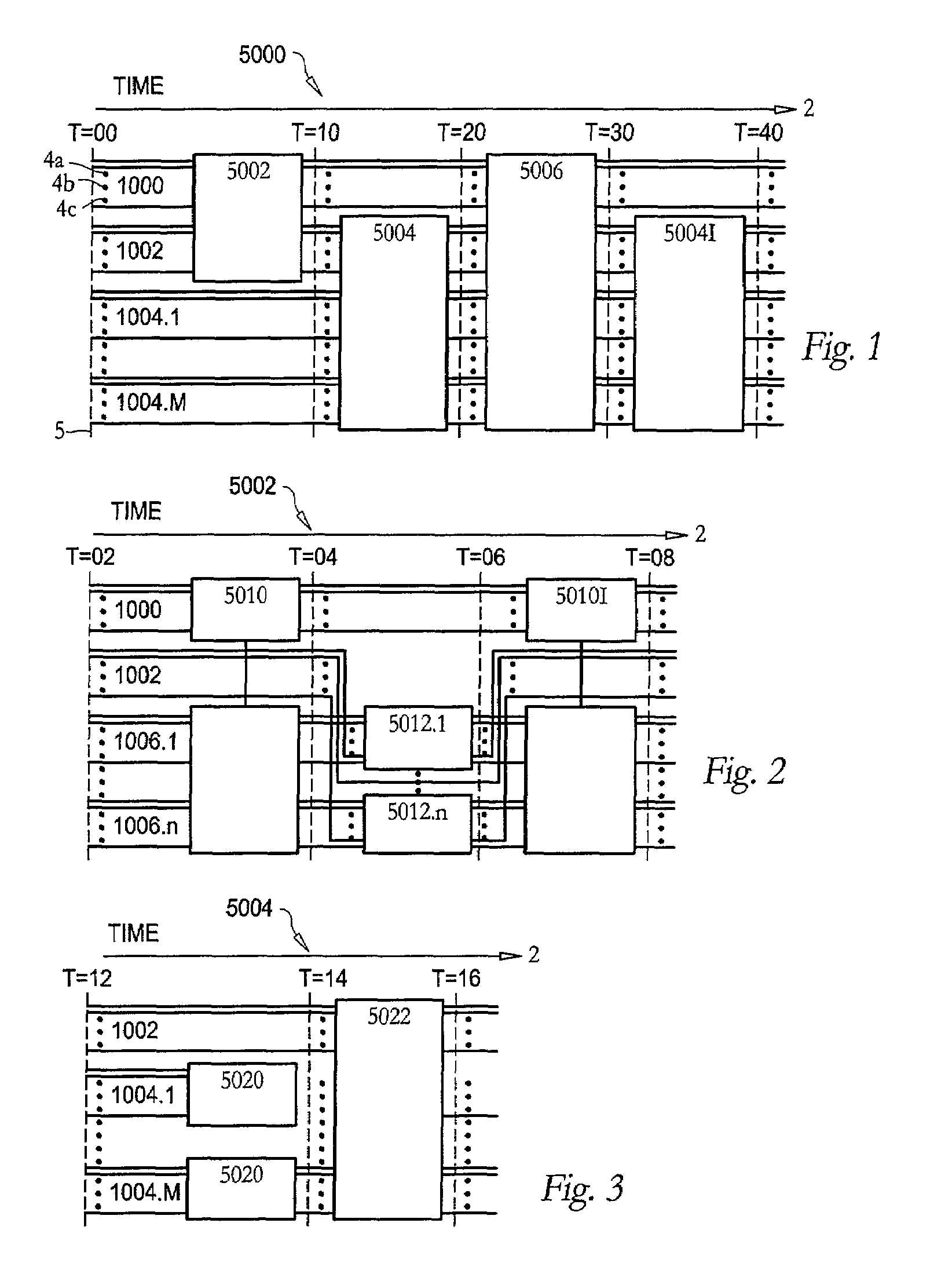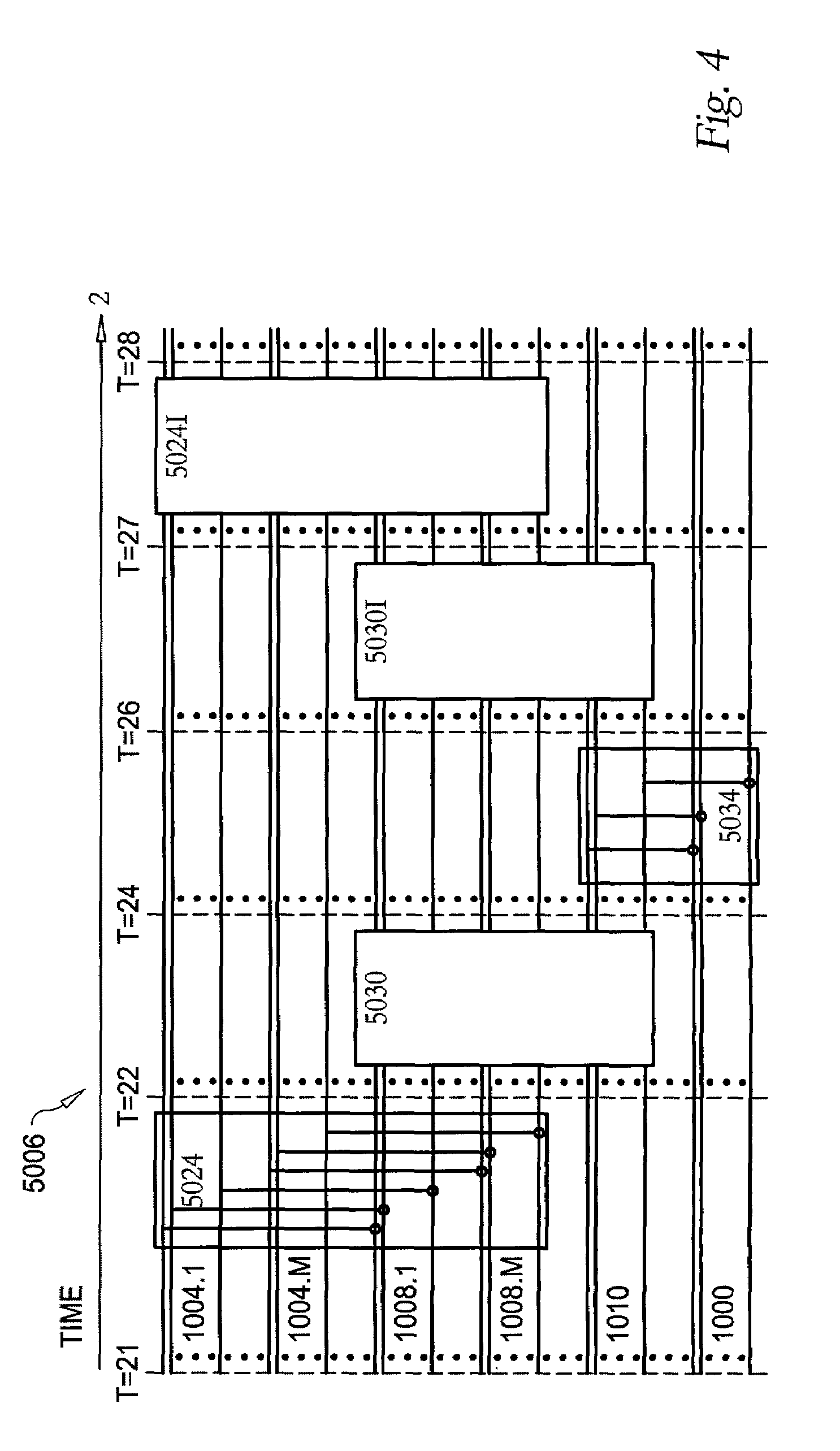Efficient quantum computing operations
a quantum computing and efficient technology, applied in computing models, instruments, nanoinformatics, etc., can solve the problems of no longer secure current cryptography systems, large inputs are generally computationally time-consuming, and computation problems are only efficiently solved for small inputs, etc., to achieve and efficient performance of q
- Summary
- Abstract
- Description
- Claims
- Application Information
AI Technical Summary
Benefits of technology
Problems solved by technology
Method used
Image
Examples
Embodiment Construction
[0054]FIGS. 1–7 represent time evolution of qubits in a physical system forming the data processing unit of a quantum computer. In FIGS. 1–7, time increases from left to right. In FIGS. 1–7, each horizontal line represents the information content of the spin states of a spin ½ particle, a qubit of the data processing unit. Rectangles represent physical operations performed on the qubits whose lines intersect the rectangle. In FIGS. 1–7, numbers in the range 0–40 label sequential times. In FIGS. 1–7, numbers in the range 1000 to 1010 label sets of approximately equal numbers, n, of qubits. In FIGS. 1–7, numbers in the range 5000–5032 label rectangles representing physical operations on qubits. Numbers representing inverses of a physical operation have an “I” suffix. An inverse of a quantum operation requires the same depth and size as the operation. Modulus 2n herein refers indirectly to the fact that there are 2n basis states necessary to describe the state of n spin ½ particles
[005...
PUM
 Login to View More
Login to View More Abstract
Description
Claims
Application Information
 Login to View More
Login to View More - R&D
- Intellectual Property
- Life Sciences
- Materials
- Tech Scout
- Unparalleled Data Quality
- Higher Quality Content
- 60% Fewer Hallucinations
Browse by: Latest US Patents, China's latest patents, Technical Efficacy Thesaurus, Application Domain, Technology Topic, Popular Technical Reports.
© 2025 PatSnap. All rights reserved.Legal|Privacy policy|Modern Slavery Act Transparency Statement|Sitemap|About US| Contact US: help@patsnap.com



